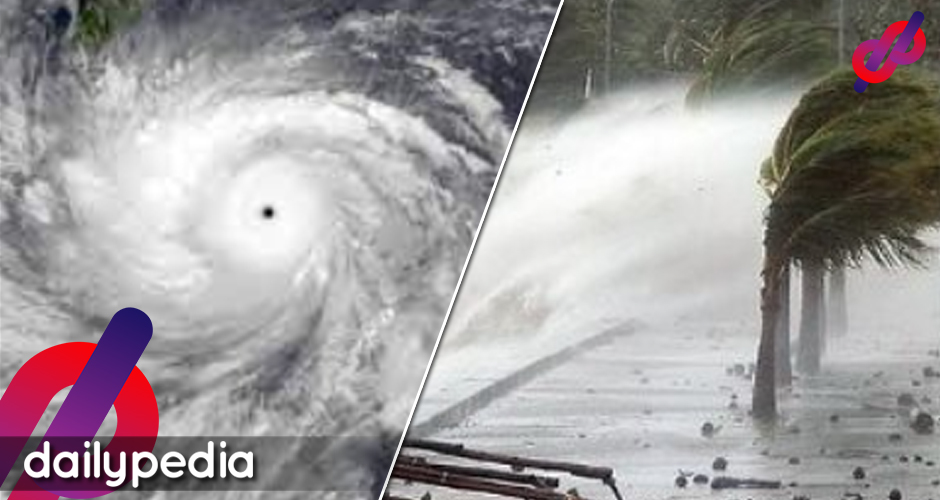The Pacific Ring of Fire and the Pacific Typhoon Belt are among the deadliest disaster-brewing grounds on this planet–and the Philippines lies within them, hence, the number of life-claiming natural disasters the country has, every year.

Three of the strongest storms on record battered the Philippines, with some also being the costliest typhoons ever, leaving billions of US dollars’ worth of damages to infrastructure and the economy. The starkest and bluntest indication of these storms’ horrifying sequences often reflected in the lives they claimed. The following lists the storms which left great human casualties in the Philippines:
Haiphong (1881).
There are no clear existing documents noting the actual strength of the deadly storm, which hammered through the Southern Philippines (including Manila) from September 27 to October 8 of 1881.
The number of deaths left in the wake of the storm was glaring proof of its devastating nature. The total recorded fatalities of 23,000. The 20,000 were recorded in the Philippines, making it the deadliest storm ever to barrel through the country.
Yolanda or Haiyan (2013).
Known internationally as Haiyan, Super Typhoon Yolanda, considered the strongest typhoon at landfall, battering through the central Philippines at maximum strength, no other recorded calamity to cross the country ever had.
It is also considered the costliest typhoon in the country, having incurred nearly $3 billion worth of damages in livelihood, economy, and infrastructure (more than $2 billion of which, in the Philippines).
A category-5 typhoon, Haiyan brought more destruction than any other typhoon that crossed the country since the dawn of the 21st century. The super typhoon claimed at least 6,000 lives, with thousands recorded missing in its wake.
Uring or Thelma (1991).
The infamous Ormoc tragedy, which buried thousands of residents alive, was among the most glaring reminders of this 1991 typhoon. Interestingly, Thelma was a relatively weak storm whose strength only peaked at 45mph (10-min-sustained). The amount of rainwater it poured over the island of Samar, over three hours, was recorded at nearly 580mm, which swiftly drowned the city’s lowlands.
Massive deforestation on the island and the lack of vegetation had caused much of the disaster. It made the ground unable to absorb flood more quickly and efficiently.
According to several records, the deaths alone in Ormoc were nearly 5,000. The number of overall casualties is around 8,000.
Pablo or Bopha (2012).
Pablo is one of the deadliest storms to hammer through the island of Mindanao. It was a super typhoon that made its first landfall in Baganga municipality, Davao Oriental, on the 4th of December 2012.
Not being used to a storm, the island went through a massive strength and proved to be taken aback by the amount of destruction it left.
In terms of economic devastation, Pablo is considered the second most destructive typhoon in the country. It decimated an estimated $1 billion worth of livelihood and infrastructure on Mindanao island. However, it claimed 1,901 lives, making it one of the deadliest Philippine storms on record.
Angela (1867).
Not much about this destructive typhoon is known, but some credible sources underscore its fatal consequences when it battered through the island of Luzon in 1867.
The oldest typhoon ever recorded since the country started to make official records of destructive weather disturbances. Manila felt much of its strength with occurrences of mountainous waves at the Manila bay. Nearly 2,000 Filipinos (The Selga Chronology) were said perished amidst and in the wake of the storm.
As climate change remains a potent driver for natural disturbances like typhoons to worsen, the Philippines remains at the frontlines in confronting these storms.
The most recent super typhoon in the country was the October 2020 super typhoon, Rolly (Goni). It was followed by an even more destructive (but weaker in strength) storm, Ullysses (Vamco), that poured some of the highest recorded downpours since Ondoy (2009).
The most effective way of saving lives, as proven by a smaller number of fatalities recorded by the last few destructive typhoons, remains the Government’s preparation—coordination between assigned offices and modernization of state weather bureau, and implantation of other scientifically proven measures, there is.


